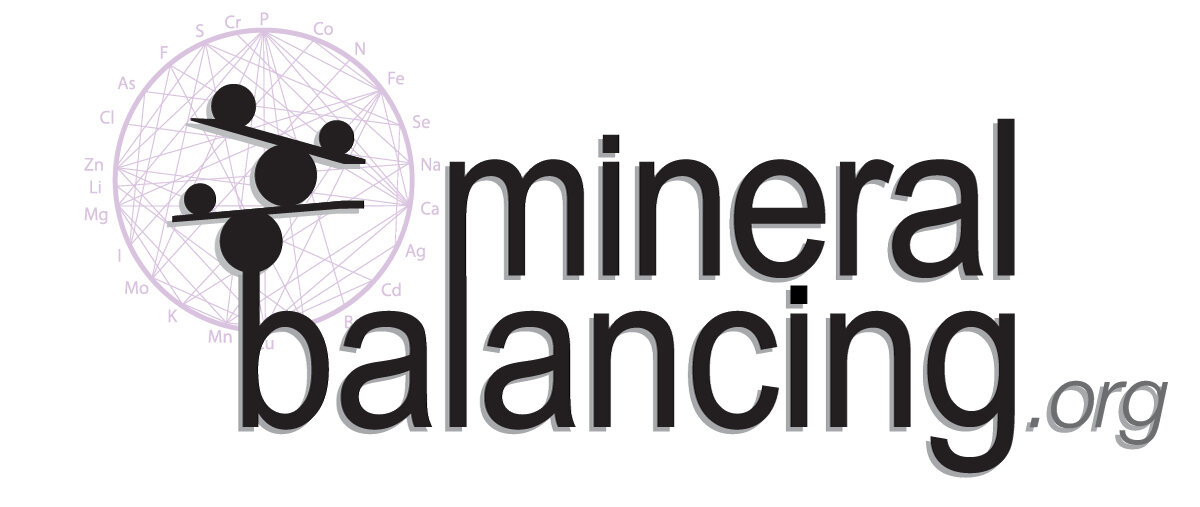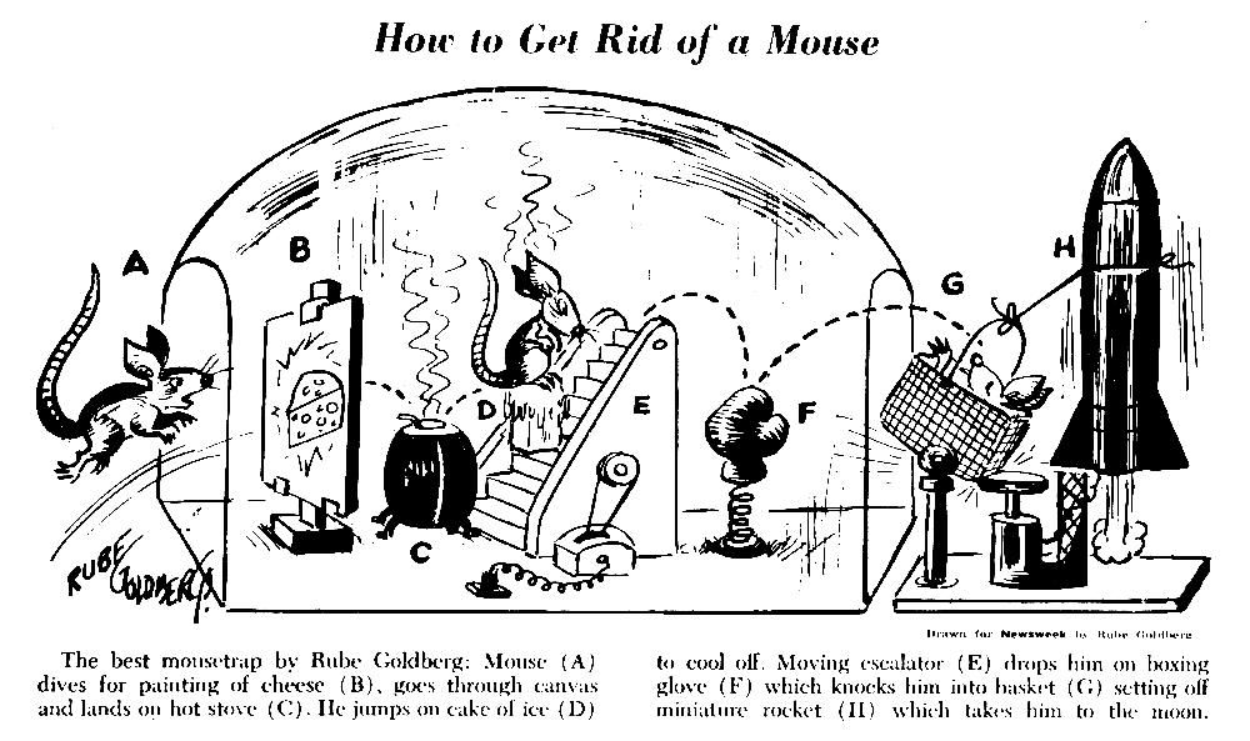The Chain Reaction Principle: Why Just One Mineral Out of Balance Can Affect ALL the Others
According to Dr Paul Eck, one of the pioneers of mineral balancing with hair tissue mineral analysis “Every single mineral in the body has an effect on every other mineral in the body” and that “No mineral works alone”.
While this seems like a simple statement, it has far-reaching implications when it comes to our health and is a good example of holistic nutrition. We are not a simple cause = effect machine like that of Rube Goldberg’s imaginary inventions. The intricate relations of minerals and their interdependence is exemplified by the mineral wheel, showing just how complicated mineral balancing can be.
If just one mineral is out of balance in the body, it has a downstream effect on all of the other mineral levels by starting a massive chain reaction of imbalances. This is why the interpretation of a hair test is so complex, but also, the reason why mineral balancing is so rewarding.
Many people say that they are just taking a little bit of extra magnesium, zinc or vitamin C. Not realising the harm that they can cause by taking even one mineral supplement that they do not really need. In some instances, they may need the nutrient. but they are taking it in excessive amounts, further imbalancing their mineral levels and setting the stage for health conditions down the road. This is one of the differences between mineral balancing and shotgun supplementation. This is also why we do not supplement to correct symptoms, or as replacement therapy and instead focus on balancing the body’s chemistry at the cellular level.
Even though we are all made up of the same chemical elements, we are all unique to a certain degree. The factors that make us unique include; our experiences, our history, our genetic makeup, our environment, and our diets. If all of these factors were the same for each and every person, we may just as well require the same nutrients at the same amounts. However, because we all have different factors which influence who we are, some people may require more of specific nutrients, while others may require less. Despite this, we find that there are at least 2 major metabolic types.
For instance, consider the supplement iron. People all around the world take iron tablets because they are tired, or anaemic. They are even suggested to take these supplements by their doctors, who are practising replacement therapy. Unfortunately, if the iron supplement is not taken in the right ratio with other minerals, it can make you even more tired. It is simply not wise to take a generic iron supplement. For example, fast oxidisers often have too much iron. Shotgun supplementing simply does not work in the long term for one simple reason; each human is unique. In fact, there is no single person exactly like you, and no person who has the same history, genetics or metabolism. Thus, each of us has unique biochemical needs. Because of this uniqueness, the amount of iron that you may need differs from person to person. Our biochemical needs for specific nutrients may be similar to other people, and we can identify the amounts by getting a hair tissue mineral analysis and having it interpreted by someone who knows about metabolic typing that Dr’s Paul Eck and David Watts categorised.
We can see this biochemical uniqueness on a hair tissue mineral analysis. When a person takes an iron supplement, here is an example of what happens:
1. Sodium goes up. Supplementing iron stimulates the adrenal gland and thus causes sodium levels to rise.
2. Magnesium goes down. With the adrenal gland stimulated and the increase of sodium, magnesium levels drop.
3. Calcium goes down. Calcium and magnesium maintain a critical ratio with one another, so when magnesium goes down, calcium also goes down.
4. Potassium goes up. When calcium goes down, potassium rises.
5. Nitrogen goes down. The mineral changes above indicate that the person's oxidation rate is going up and moving towards a state of fast oxidation. This causes a person to catabolise their own proteins, instead of building them. This lowers the nitrogen level.
6. Copper goes down. Since tissue respiration is speeding up, copper is being used more quickly. If the copper is already at low levels, or if the person has high zinc to copper ratio. Then his copper availability could plunge to dangerously low levels. At levels below 1.0, their is a research trend that has been correlated with an increased incidence for cancer.
7. Zinc goes down. Another critical ratio is between zinc and copper. As the copper level goes down, the level of zinc also goes down to maintain the ratio. Since zinc is needed for the proper functioning of the adrenal glands, the lowering of zinc will eventually exhaust the adrenals. When this happens, you become more tired than before you started taking iron.
8. Manganese goes up. As the zinc goes down, the manganese level goes up. This is because they typically move in opposite directions. Since something does not come from anything, eventually, manganese reserves are depleted. This is unfortunate, according to Dr Eck, because manganese in combination with iron makes a person very powerful physically and emotionally. As manganese levels collapse, the person becomes weak and indecisive (exhausted adrenals weaker than he was before he began taking the iron tablets).
In other words, by just taking an iron supplement makes anaemia worse. All these mineral imbalances could easily be caused by just one mineral which has become too high in relation to the other elements such as in this case, iron.
You can see now what can happen when you take 'just a little iron" to get your energy up. This same principle applies to adding any nutrient to a mineral balancing program. So, when a person has 20 minerals out of balance, just imagine how complicated it can get trying to balance them!
[Article originally written by Dr Paul C. Eck. It was published in the 1980’s by The Healthview Newsletter and edited and adapted by John Bumpus]

